A guy wearing a beret, holding a camera, sometimes looks through an old royal decree with the old people, sometimes stands in the middle of an excavation pit with ancient artifacts, carefully measuring and explaining.
These are familiar images to those who follow the TikTok channel "Archaeological Cemetery".
There is no "sensational" content, no flashy effects, what keeps viewers interested are historical stories told in a gentle, lively voice and rich in interesting information.
The owner of this TikTok channel is Do Minh Nghia - a 9x guy from Hai Phong , currently working in research, excavation and heritage preservation.
"Archaeology Diary" - a series of videos he filmed, edited and shared himself - has attracted millions of views and tens of thousands of interested comments, even from people who never thought they would be interested in history.
Different from most people's image of "dusty" archaeologists or "senior" scholars, Nghia brings a completely different image: Using all kinds of machines to decode history, redrawing artifacts with Illustrator, 3D scanning, flying drones, making videos on Premiere, Capcut to share about newly excavated sites.
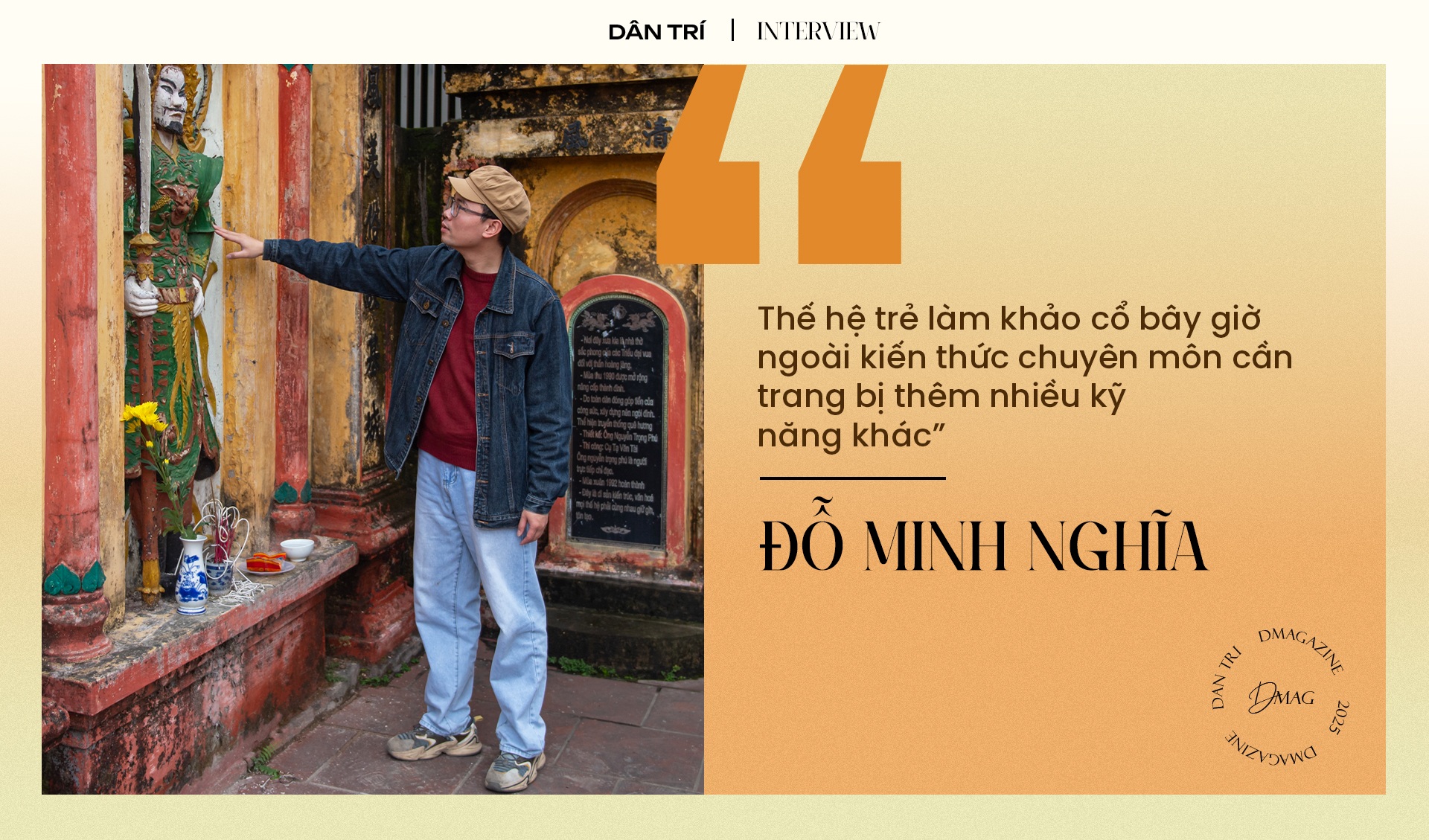
"The young generation doing archaeology today, in addition to professional knowledge, needs to be equipped with many other skills.
In particular, being proficient in using computer software helps support my work effectively, and also helps me recount my exploration journeys and archaeological trips in video form more easily on social networks," Nghia shared.

Like many other 9x, Nghia's childhood was also immersed in stories or archaeological exploration and adventure movies such as: Doraemon, Queen of Egypt, The Three-Eyed Boy, Jurassic Park or the Indiana Jones series.
His curiosity about mummies, ancient civilizations and thrilling stories nurtured his passion for history and archaeology.
In 2013, the Hai Phong boy went to Hanoi to study Archeology at the University of Social Sciences and Humanities.
"In my class, three people chose archaeology as their major, but now I'm the only one still pursuing this field," Nghia said.
The young man added that archaeology is still not a very developed field in Vietnam, so even if you have a passion for it, not everyone has the strength and power to stay in the profession.
In 2015, the young student found enough opportunities to do extra work related to his major in archaeology.
A journey of a thousand miles begins with a single step. He applied to join the excavation at Doan Mon area in Thang Long Imperial Citadel. Under the nearly 40 degree Celsius sun, Nghia’s job at the moment is no different from that of a worker digging the ground with a salary of only 105,000 VND/day.
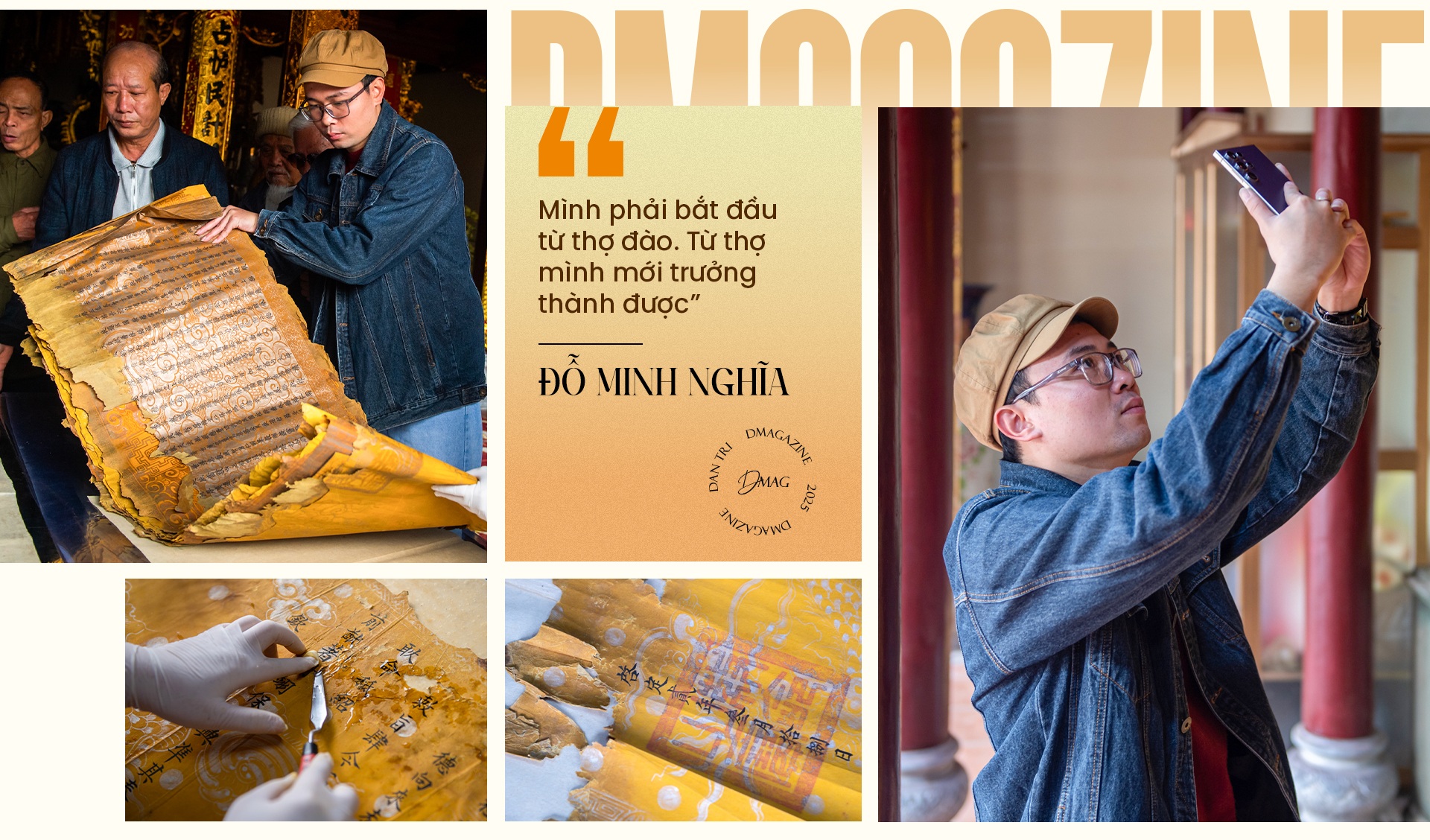
Despite the hardship and many options with higher salaries, Nghia still believes: "I have to start as a digger. Only from a worker can I mature. And most of all, I get to do what I love, excavating one of the most important relics of the country."
Two years later, a major discovery marked the young archaeologist's first steps.
At the end of 2017, he participated in the archaeological site at An Sinh Temple (Dong Trieu, Quang Ninh). This place is believed to have been the palace of An Sinh Vuong Tran Lieu (father of Hung Dao Vuong Tran Quoc Tuan).
For an archaeologist, in addition to the discoveries on the surface, the most important discovery is the mysteries that lie underground. While searching, the young man discovered many fragments scattered under the soil. The more he explored, the more surprised he was because "he didn't think it was that big".
"This is an extremely important relic. The fragments belong to a brown ceramic vase, more than 1 meter in diameter, weighing up to 126 kg from the Tran Dynasty. It is even more important because the original location of this vase is here, not moved from another place," Nghia said about his discovery.
Currently, the fragments have been restored by experts. The bell is on display at the Quang Ninh Museum. In 2021, this relic was recognized as a National Treasure.

Excavation is just one of many tasks in the archaeological process, in addition to research, fieldwork, interviews, etc. Therefore, the archaeological investigation of a site can last for many days, even months, years to obtain results.
There were excavations where he and his colleagues had to spend days doing everything they could to survive in the true sense of the word. From eating wild vegetables, bathing in streams, to carrying 20 liters of gasoline and food up a mountain 518m above sea level, to make fuel for a generator, the young man had experienced it all.
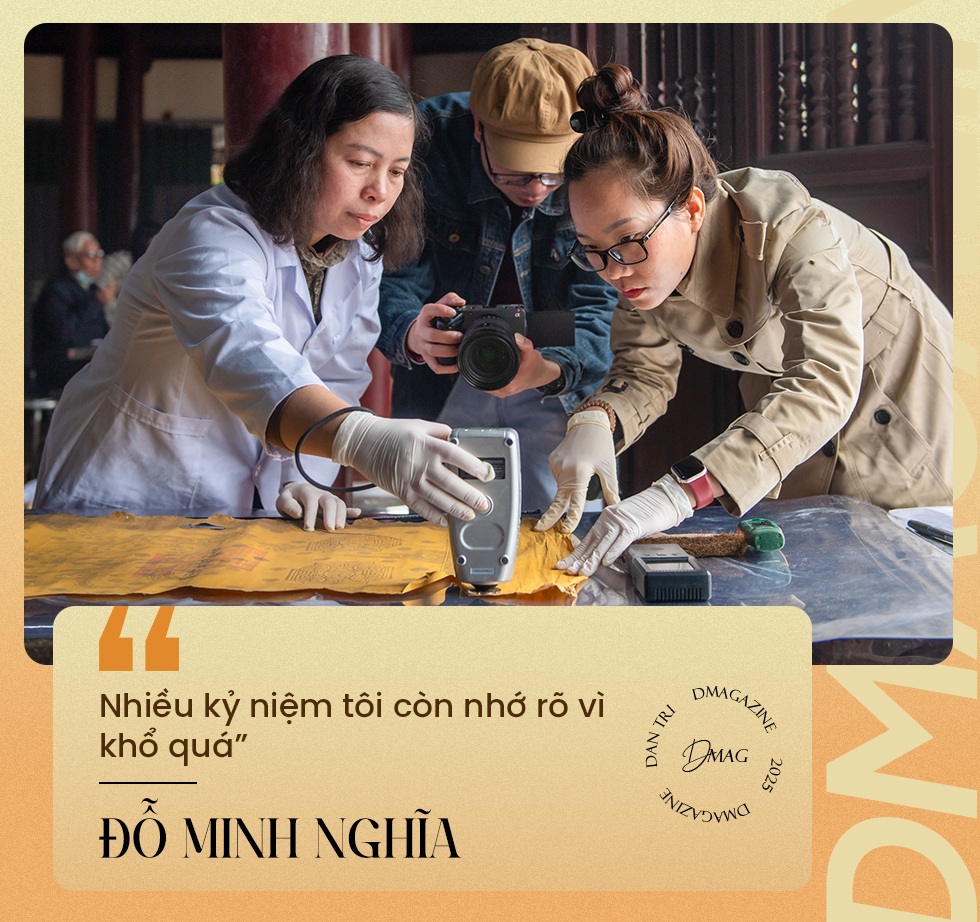
"I still remember many memories clearly because of the hardship," Nghia laughed, "But the results were valuable. Once, my group and I even found traces of a medicinal pill furnace."
Not all artifacts are grand in form. Sometimes, they are just a piece of paper, rotten, stained, creased, torn by time, but containing the memories of an entire dynasty.
For Do Minh Nghia, restoring ancient royal decrees - administrative documents issued by the king - is an indispensable part of the archaeological journey.
"Through these documents, we can know which king bestowed the title on whom and what the title was," he said.
Some royal decrees are missing the exact spot where the king’s seal was stamped. Some royal decrees record ancient place names that no longer exist on modern maps. But, according to Nghia, that is the fascinating point – it’s like solving a big historical puzzle.
"At those times, I had to carefully observe the patterns to compare with the characteristics of each dynasty, or look up geographical documents, then listen to the elders tell stories to find traces of those places," he said.

Contrary to what many people imagine, archaeology is not just about shovels and notebooks. For Nghia, his luggage to each site also includes a level, specialized testing equipment, a flycam, a digital camera, and even a laptop with enough design and graphics processing software.
It is not simply a matter of observing, excavating artifacts and applying historical knowledge. Archaeology and restoration of artifacts require many more steps and skills.
Graduated with a degree in Archaeology, Nghia also studied Han Nom, then learned about restoration techniques, color measurement, moisture measurement, and paper analysis - considered a "mini medical kit" for heritage.
The young man cited that the current state of many royal decrees has been severely damaged due to objective conditions and improper preservation methods, so in-depth research is needed on both the value and methods of restoring and preserving these ancient documents.
On the same sheet of paper, many devices are used to "diagnose" the document, in order to find the best way to preserve it.
The most obvious is the colorimeter. With the naked eye, it is difficult to know the original color of the royal decree because the color has been affected by the preservation process, humidity, and fading over time. The colorimeter will then measure and give numbers to compare with the original color.
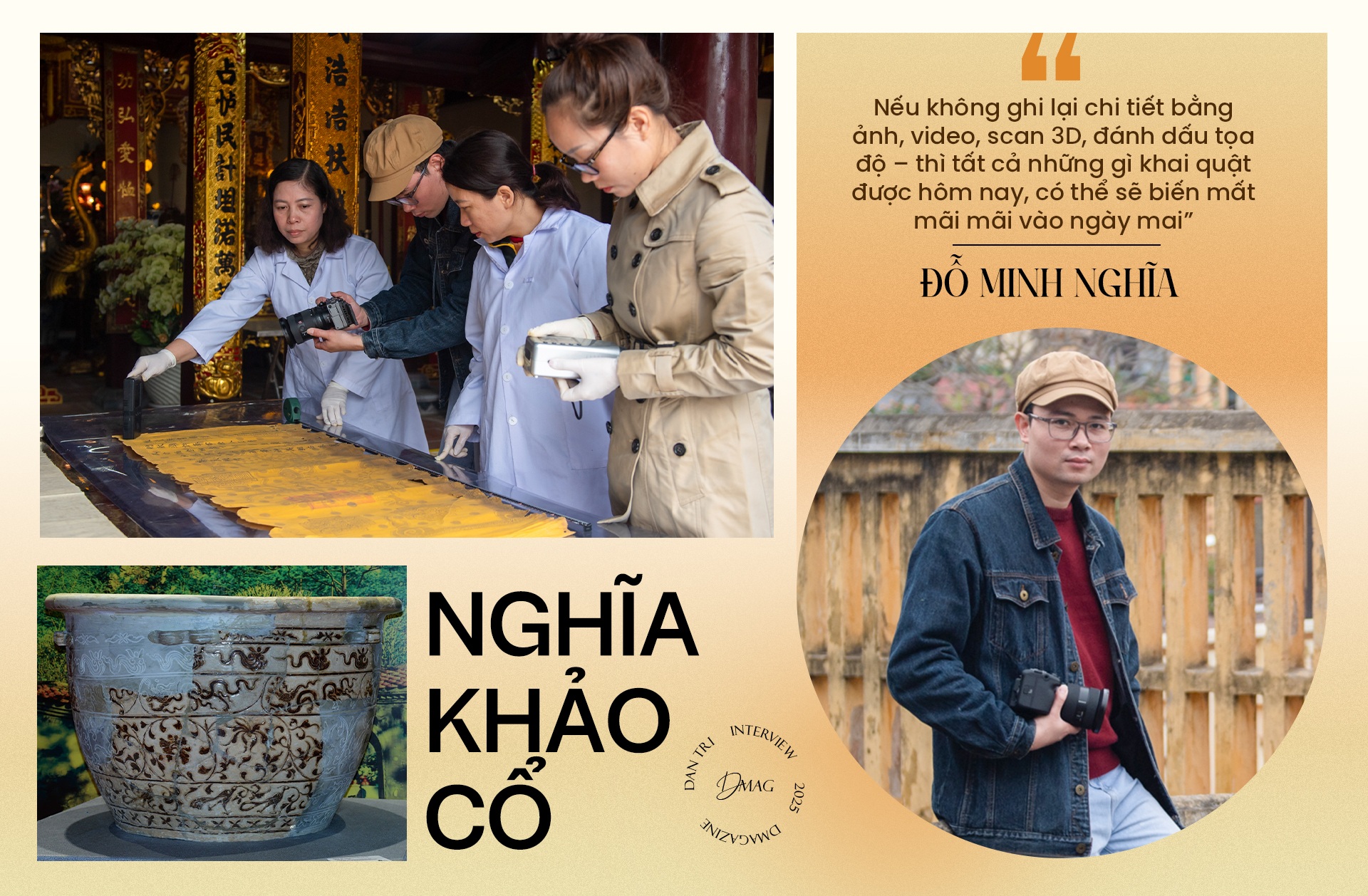
Next is the moisture meter. Each surface of the paper has different moisture levels. Based on the measured parameters, researchers can monitor the preservation conditions of the artifacts.
"My colleagues and I are never allowed to directly interfere with the patterns or writing. No repainting, no additional drawing. We can only reinforce and preserve what remains," Nghia analyzed.
Not only architects or geologists, archaeologists also need to know how to use levels and total stations to get numbers related to coordinates and locations on the ruins.
With the parameters, he used additional graphic software such as Photoshop, Illustrator, AutoCad to redraw the original shape of the antiques and relics. From the reconstruction on that soft copy, later researchers had more data to compare.
"I learned Illustrator, AutoCad, MapInfo... to work more effectively. Because there are relics that, if not reconstructed with digital drawings, it is impossible to visualize what the original structure looked like.
But if we don't record details with photos, videos, 3D scans, and coordinate markings, everything that is excavated today could disappear forever tomorrow," Nghia confided.

From the very first days of doing archaeology, Nghia had the habit of storing all his photo materials on Google Photos.
These are images and footage throughout the young man's journey of "decoding the past". To be proactive in his work, Nghia invested in cameras, flycams, and projectors.
Initially, he had no intention of becoming a content sharer. But after being suggested by his wife, Nghia tried posting his first video called "Archaeological Diary" - recording the excavation process at a site.
After only a few days, the video unexpectedly attracted hundreds of thousands of views. Comments such as "Why do I only know now that archaeology in Vietnam is so interesting?", "Brother, come back to my hometown, my village's communal house still retains its old royal title!" appeared frequently.
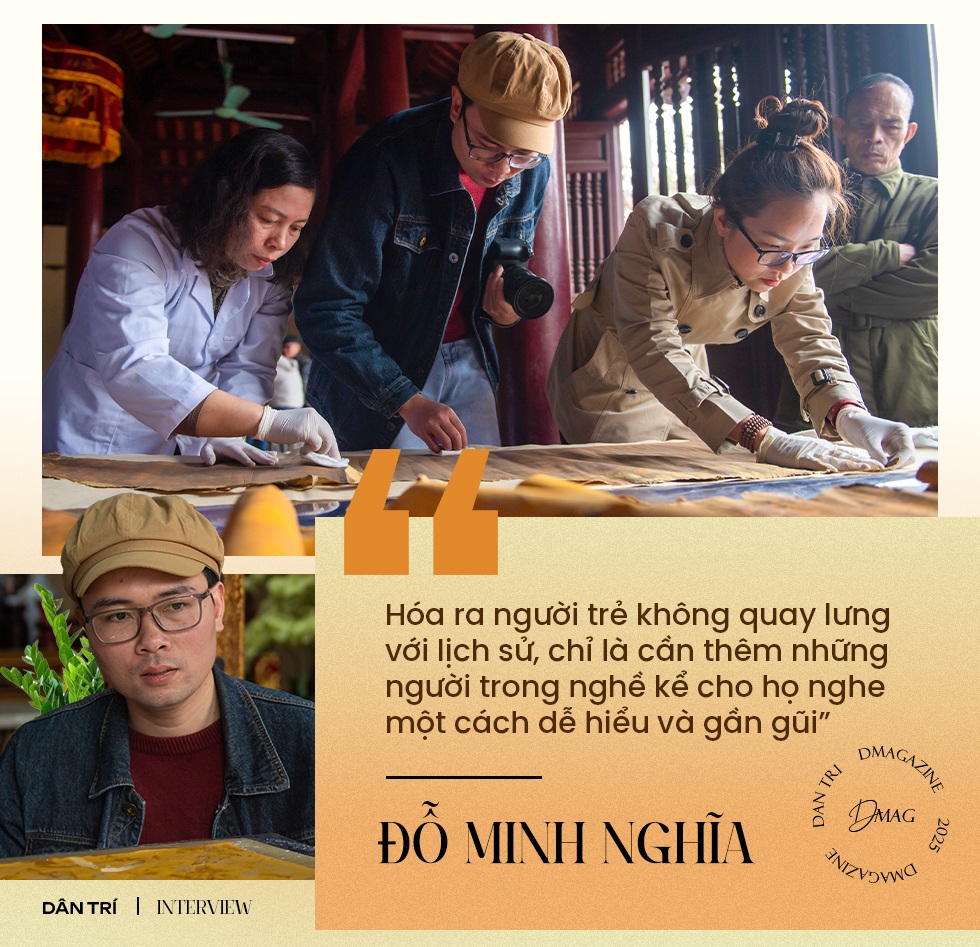
He said: "I didn't think my work could attract viewers like that. That made me realize that young people don't turn their backs on history, they just need more people in the profession to tell them in an easy-to-understand and approachable way."
Following that, Nghia's Archaeological Diary videos continued to attract a large number of views on Tiktok. Tens of thousands of people followed and were interested in the locations he shared. This was also the motivation for him to further improve his soft skills.
Thanks to the TikTok channel, many people got to know Nghia, texted him, shared about the artifacts, and invited him to come to their locality to do research.
Recently, a student in Tieu Thuong village, Tu Son, Bac Ninh contacted Nghia via TikTok channel to share that there are many ancient royal decrees in his village's communal house.
Thanks to that, the texts that the people of Tieu Thuong village considered treasures were decoded and restored by the archaeological team so that they could be passed down to many more generations.
The passion for history, the soul of the nation, is thus "passed on" to each other by young people.
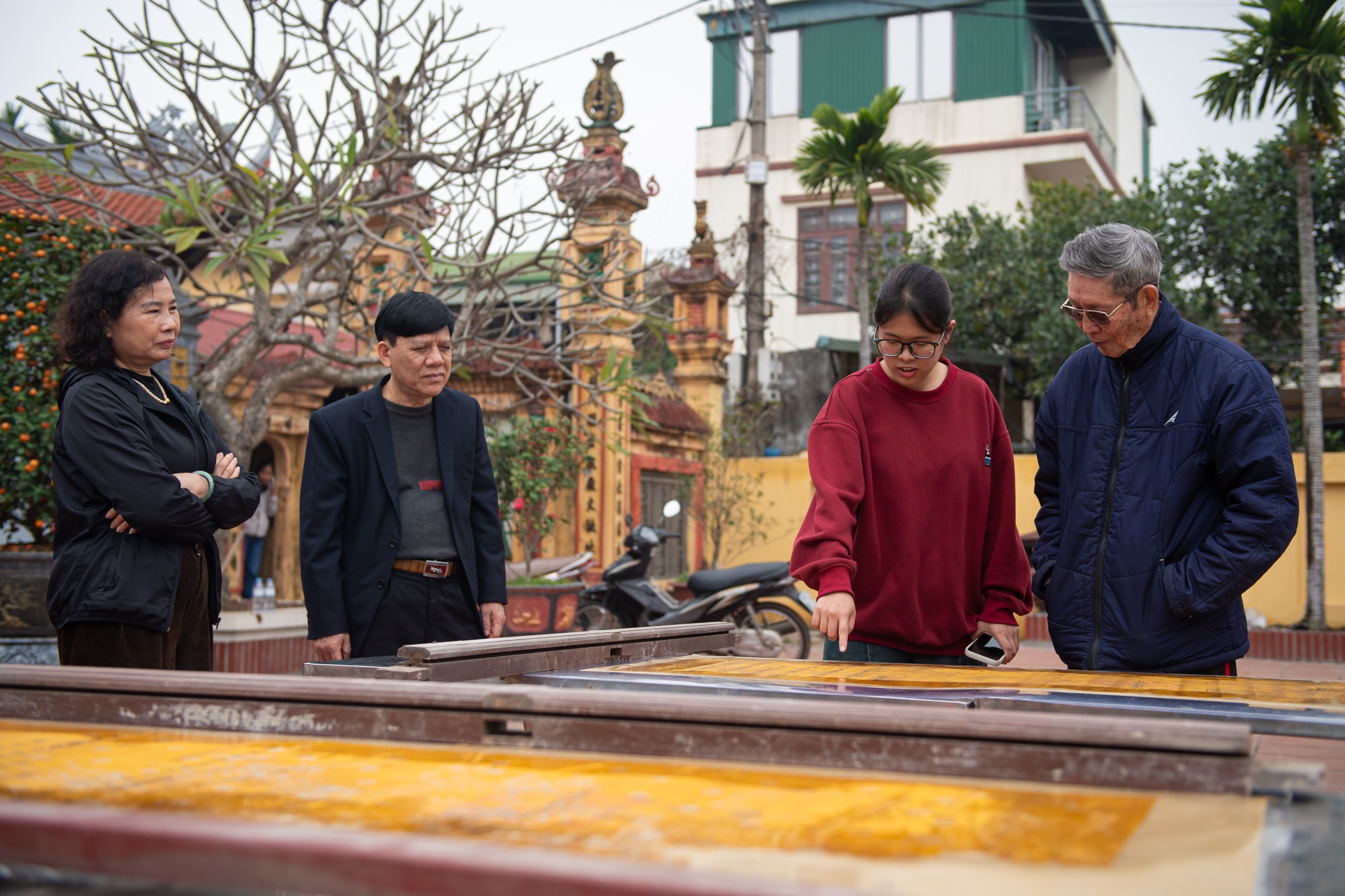
Source: https://dantri.com.vn/khoa-hoc/nha-khao-co-9x-ke-chuyen-nghin-nam-cho-nguoi-tre-bang-tiktok-20250401221820733.htm



![[Photo] Prime Minister Pham Minh Chinh chairs a meeting on the implementation of the Lao Cai-Hanoi-Hai Phong railway project.](https://vphoto.vietnam.vn/thumb/1200x675/vietnam/resource/IMAGE/2025/5/20/0fa4c9864f63456ebc0eb504c09c7e26)

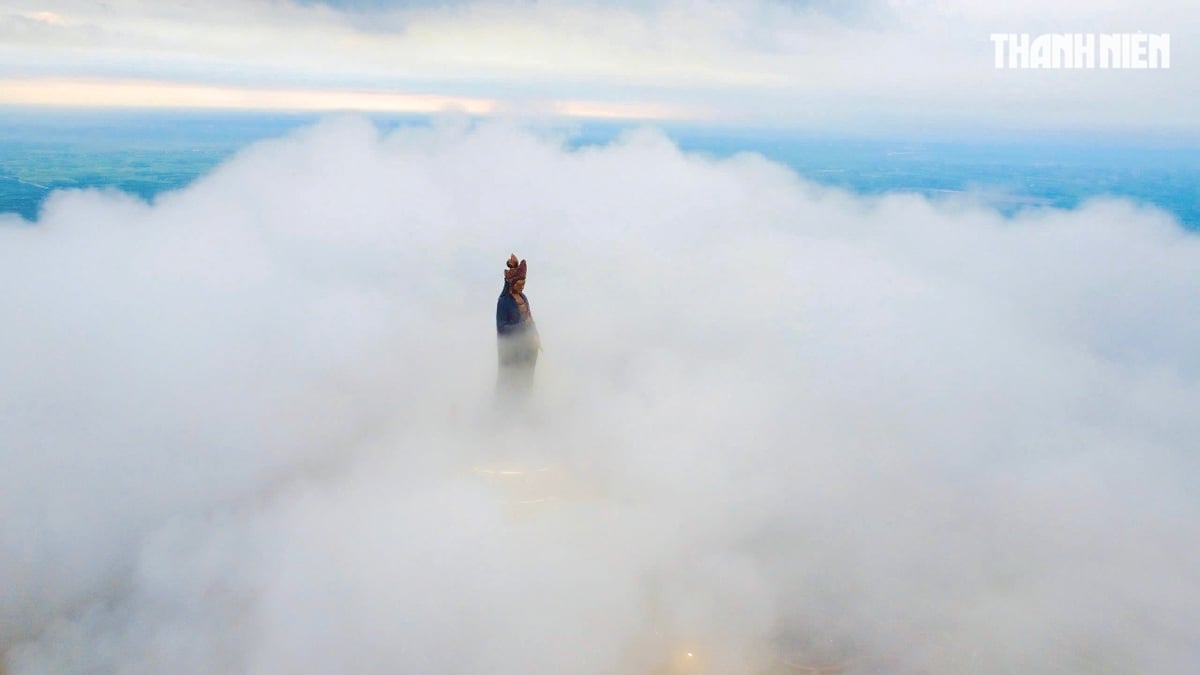
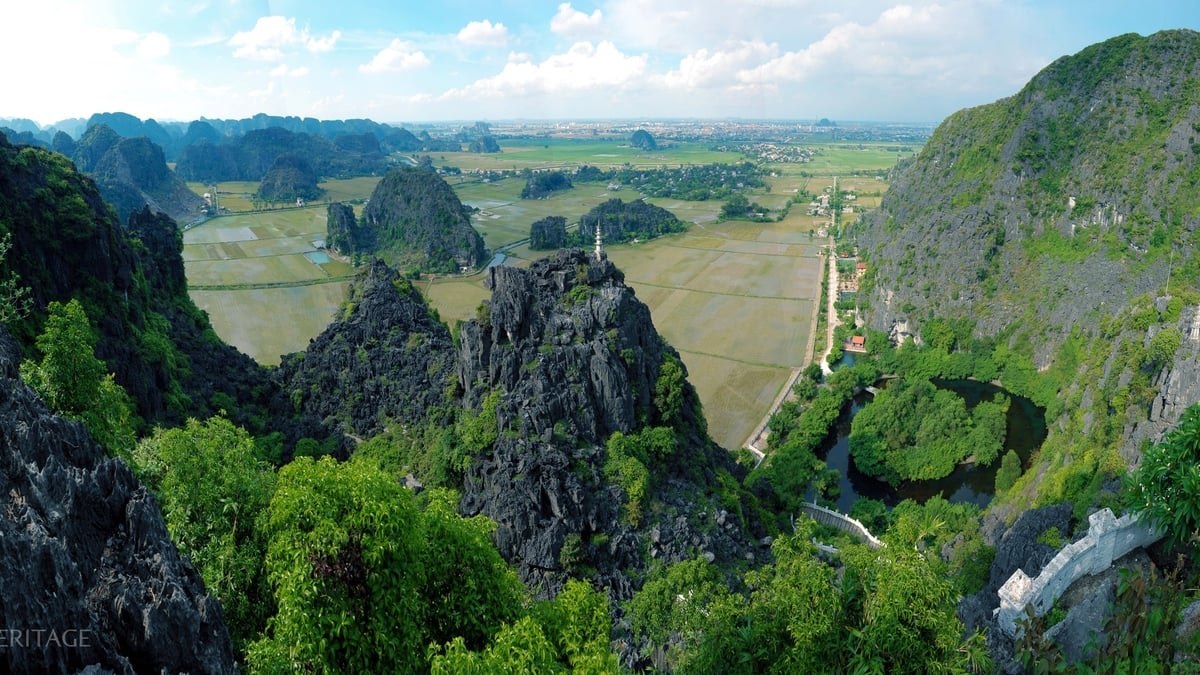
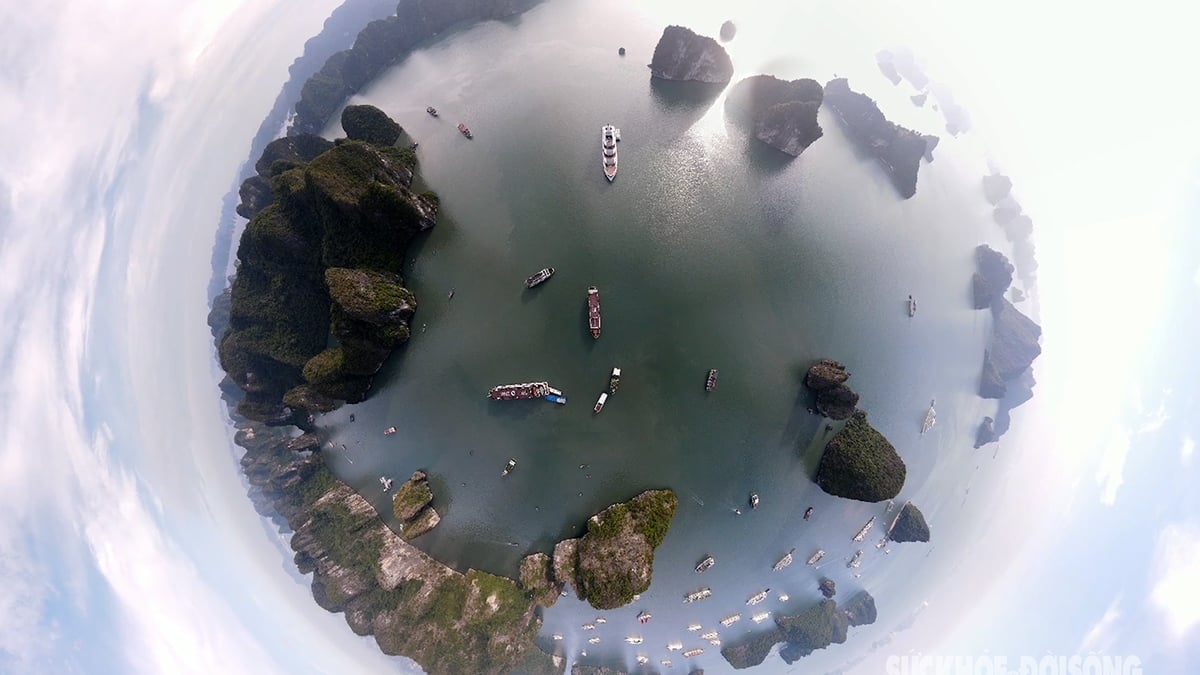








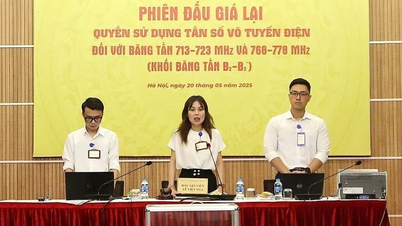


































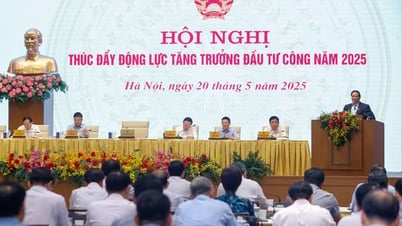






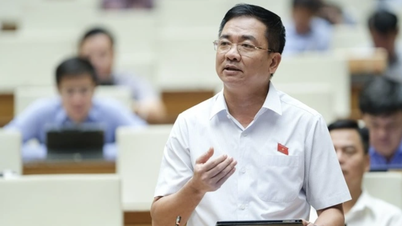







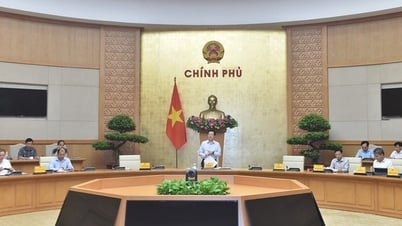

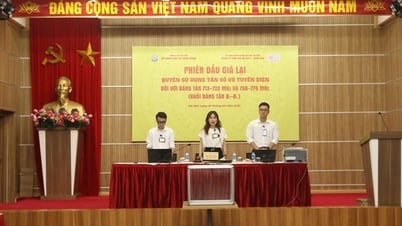


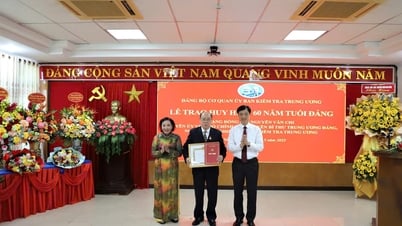

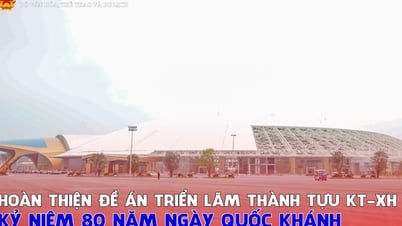
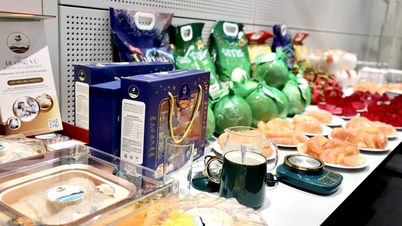

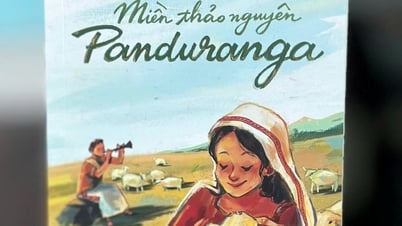

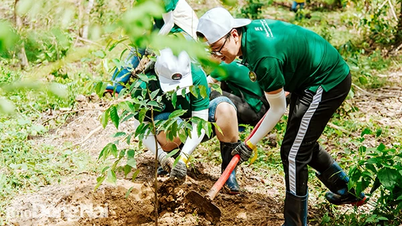



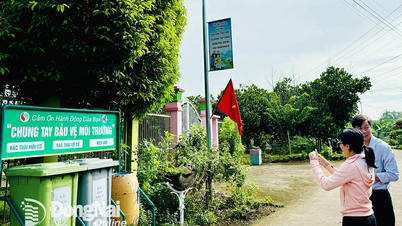
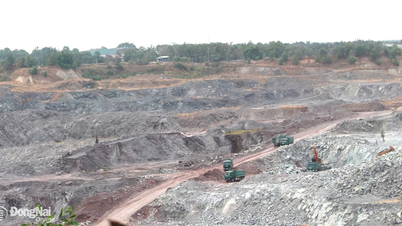












Comment (0)